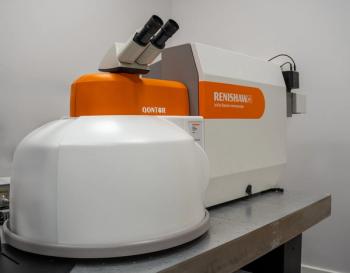
Analytica 2024: The Latest Applications in Chemometrics
Experts from BASF, the French National Institute for Agriculture, Food, and Environment, and other institutions discussed how their teams are using chemometrics to improve their work.
On April 10, experts from across Europe, spoke about the latest trends and challenges in chemometrics at the Analytica conference in Munich, Germany. The session was chaired by Claudia Beleites, chief executive officer and owner of Chemometric GmbH, and Marcel Dahms, data analyst at LightGuard GmbH in Germany.
During the first presentation, Jean-Michael Roger, of the French National Institute for Agriculture, Food, and Environment, delivered a talk on calibration transfer and domain adaptation spectrometry, which is a chemometric technique used to apply a single spectral database and the calibration model developed using that database for multiple instruments (1).
Spectrometry-based sensors rely on indirect measurements and require a calibration model to account for variations in the parameter(s) of interest, Roger said. However, external factors such as temperature fluctuations and changes in chemical composition challenge the robustness of these models. During the presentation, Roger gave an overview of strategic approaches to address these challenges, including various correction methods and modeling techniques. The effectiveness of methodologies such as orthogonal projections and domain adaptation in improving the accuracy and stability of spectrometry-based sensor measurements was described in detail.
Next, Yulia Monakhova of the FH Aachen-University of Applied Sciences, presented a lecture on transfer and multivariate regression models between infrared (IR) and near infrared (NIR) instruments, as applied to electronic cigarettes. Chemometric techniques play a crucial role in modeling spectroscopic profiles of complex mixtures, but implementing quantitative multivariate models across different locations can be challenging due to equipment variations, she said. Monakhova spoke about direct standardization (DS) as a calibration transfer method for determining nicotine, propylene glycol, and glycerol in electronic cigarettes using IR and NIR spectrometers interchangeably. The root-mean-square error of prediction (RMSEP) values for partial least squares (PLS) models evaluated with initial calibration data and corrected test sets were comparable, she said.
Pierre Esseiva of the School of Criminal Justice at the Universitie de Lausanne in Switzerland, spoke about the use of a portable NIR device, the VIAVI microNIR, for the analysis of illicit drugs. Esseiva developed a predictive model from gas chromatography-mass spectrometry (GC–MS). The team’s research concentrated on enhancing the predictive accuracy of NIR models by integrating multisource GC–MS data using advanced statistical methods and machine learning. The lecture also addressed scalability challenges for deploying these models across diverse device types. Esseiva spoke about using strategies such as device calibration validation, real-time data analysis, and strict quality control measures to ensure stable and reliable predictions at scale.
The session ended with a lecture from Rafael Teixeira Freire, a research scientist for chemometrics at BASF in Germany. Freire spoke about how BASF has integrated chemometrics into numerous projects at the company. This overview examines BASF's adoption of chemometrics, illustrating its significance and challenges. He explored the role that chemometrics plays in role in optimizing processes, analyzing mixtures, and predicting material properties. Challenges include maintaining data integrity, scaling from lab to production, and navigating complex information systems.
Reference
1. Workman, J. J. A Review of Calibration Transfer Practices and Instrument Differences in Spectroscopy. Appl. Spectrosc. 2017, 72 (3), 340–365.
Newsletter
Get essential updates on the latest spectroscopy technologies, regulatory standards, and best practices—subscribe today to Spectroscopy.



